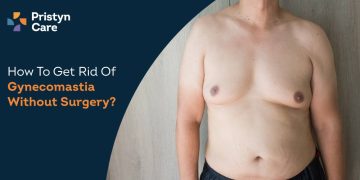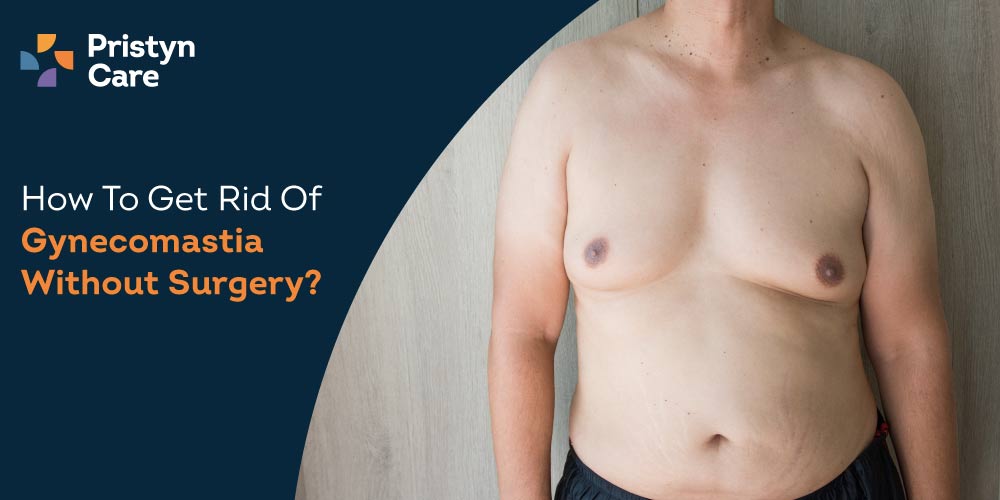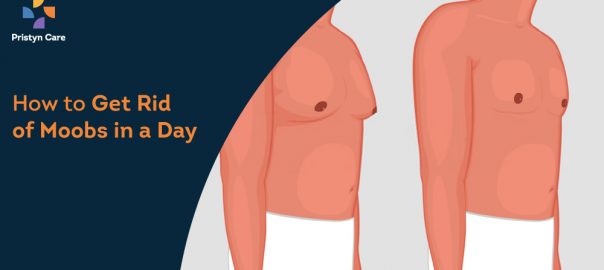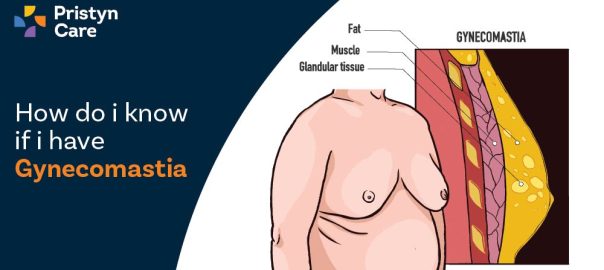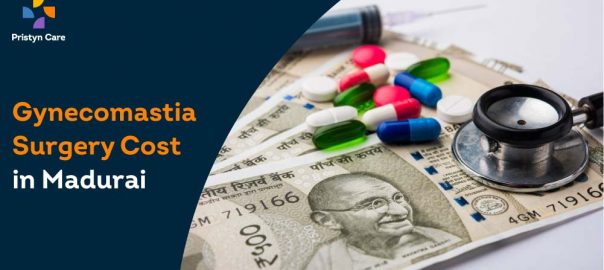![]() Views: 2,413
Views: 2,413
How To Get Rid Of Gynecomastia Without Surgery?
Dedicated Support at Every Step!
Our Doctors are available 24 hours a day, 7 days a week to help you!
Call Us0806-541-7961In this post, we will talk about various proven strategies that offer hope and real results without the need for surgery.
Be it you are dealing with hormonal imbalances or the aftereffects of certain medications, our guide provides the insights you need to take control of your body and boost your confidence.
Table of Contents
Causes of Gynecomastia
Gynecomastia arises from various underlying causes that can disrupt normal hormonal balances. Understanding these triggers is crucial for identifying effective gynecomastia treatment without surgery and managing symptoms comprehensively.
Hormonal Imbalances
At the core of gynecomastia development are hormonal imbalances, particularly between oestrogen and testosterone. In males, any increase in oestrogen or decrease in testosterone levels can lead to breast tissue growth. This imbalance might be due to natural life stages such as puberty or ageing, or it could stem from health conditions that affect hormonal production, such as hypogonadism or hyperthyroidism.
Medication-Induced Gynecomastia
Certain medications can provoke the development of gynecomastia as a side effect. Drugs such as anti-androgens used to treat prostate enlargement or cancer, anabolic steroids, HIV medication, and some anti-anxiety medications can lead to unwanted breast tissue enlargement. It is important for patients to discuss their medication's side effects with a healthcare provider and explore possible alternatives.
Lifestyle and Gynecomastia
Lifestyle factors also play a significant role in the development of gynecomastia. Excessive alcohol consumption, use of recreational drugs like marijuana, and obesity can all contribute to hormonal changes that may promote breast tissue growth. Addressing these factors through lifestyle modifications can be a vital part of managing and reducing gynecomastia symptoms.
No Cost EMI, Hassle-free Insurance Approval
Dietary Changes
Modifying one's diet is a strategic approach in managing gynecomastia, particularly when exploring how to reduce gynecomastia without surgery. A targeted dietary plan can influence hormone levels and potentially reduce breast tissue growth by balancing oestrogen and testosterone levels in the body.
Foods to Avoid
To mitigate symptoms of gynecomastia, certain foods must be limited or avoided due to their potential to exacerbate hormonal imbalances:
- Soy products: Rich in phytoestrogens, soy can mimic oestrogen in the body and may contribute to breast tissue growth.
- Processed foods: High in additives, preservatives, and unhealthy fats, these can disrupt hormonal activity.
- High-fat dairy products: These may contain hormone residues that could influence oestrogen levels.
- Alcohol: Regular consumption can significantly impact liver function, which in turn affects hormone regulation.
Foods to Include
Incorporating specific foods can help manage and possibly reduce breast enlargement by supporting hormonal balance:
- Cruciferous vegetables: Such as broccoli, cauliflower, and Brussels sprouts, which contain compounds that help regulate oestrogen levels.
- Fruits high in fibre: Apples, berries, and pears can help modulate oestrogen metabolism.
- Lean proteins: Chicken, fish, and legumes provide essential nutrients without promoting oestrogen production.
- Whole grains: Foods like quinoa and whole wheat help maintain overall hormone health.
Impact of Diet on Oestrogen and Testosterone Levels
Diet plays a crucial role in the regulation of key hormones, impacting the severity and progression of gynecomastia:
- Fibre-rich foods: These can help remove excess oestrogen from the body through the digestive tract.
- Omega-3 fatty acids: Found in fish and flaxseeds, omega-3s support hormone production and may help balance testosterone levels.
- Green tea: Contains antioxidants that can aid in the metabolism of hormones and reduction of body fat, which is linked with hormone regulation. Each dietary choice contributes to a holistic approach to managing gynecomastia by nurturing the body's natural hormonal balance.
Exercise Regimens
Exercise plays a pivotal role in managing body composition and hormonal balance, making it a fundamental component of type 1 gynecomastia treatment without surgery. A well-structured exercise regimen can help reduce overall body fat and enhance muscle tone, which may contribute to reducing the appearance of gynecomastia.
Cardiovascular Exercises for Weight Loss
Cardiovascular exercise is crucial for burning calories and reducing overall body fat, which can diminish fatty tissue around the chest:
- Running and jogging: These high-impact activities increase heart rate and calorie expenditure.
- Cycling: Either stationary or on the road, cycling is effective in burning calories and improving cardiovascular health without high impact on the joints.
- Swimming: Provides a full-body workout that tones the entire body while burning significant calories.
Strength Training to Build Chest Muscles
Incorporating strength training can specifically target and build the pectoral muscles, making the chest appear more defined and less fatty:
- Bench press: Focuses on the lower, middle, and upper pecs.
- Push-ups: Variations such as the close-grip or incline push-up can specifically target and strengthen chest muscles.
- Dumbbell flys: These help to extend the chest muscles and build mass, contributing to a tighter, more toned chest appearance.
Targeted Exercises for Chest Toning
Targeted chest exercises can help in toning and defining the chest area, which might reduce the prominence of gynecomastia:
- Cable crossovers: These provide tension from different angles, working the inner and outer pectoral muscles.
- Pullover exercises: These not only work on the chest but also engage the back and lats, supporting overall upper body strength.
- Seated row: Focuses on the upper back and indirectly supports chest muscle stability and appearance.
By integrating cardiovascular, strength, and targeted exercises, individuals can achieve a more balanced physique and potentially mitigate the effects of gynecomastia.
Natural Supplements
Natural supplements can complement dietary and exercise strategies in managing gynecomastia. They offer a less invasive alternative to surgery, supporting hormonal balance and metabolic health as part of a holistic approach to how to treat gynecomastia without surgery.
Herbal Remedies and Their Efficacy
Herbal supplements may influence hormone levels and support breast tissue reduction:
- Turmeric: Contains curcumin, which is believed to have anti-estrogenic properties. Regular consumption can potentially reduce oestrogen levels and mitigate breast tissue growth.
- Red clover: Rich in isoflavones that act as natural oestrogen blockers, helping to adjust hormonal imbalances.
- Green tea: High in antioxidants, green tea can enhance overall metabolic rate and support fat loss, which may indirectly affect gynecomastia.
Vitamins and Minerals that Help
Certain vitamins and minerals are crucial in managing hormone levels and overall breast health:
- Zinc: Plays a vital role in hormone production, including testosterone. A deficiency in zinc can lead to lower testosterone levels, which might contribute to gynecomastia.
- Vitamin D: Linked to testosterone levels. Ensuring adequate vitamin D levels can help maintain a healthier hormonal balance.
- B vitamins: Particularly vitamin B6, which helps regulate the production of prolactin, a hormone that can influence breast enlargement when elevated.
Safety and Considerations
While natural supplements can be beneficial, they must be used wisely:
- Consult healthcare professionals: Before starting any supplement regimen, it's essential to consult with a healthcare provider to avoid adverse interactions, especially if you are taking other medications.
- Quality and sourcing: Only purchase supplements from reputable sources to ensure quality and efficacy.
- Side effects and allergies: Be aware of potential side effects and allergic reactions. Discontinue use and seek medical advice if adverse reactions occur.
Incorporating natural supplements requires careful consideration of their potential benefits against possible risks. With the right approach, they can be a valuable part of managing gynecomastia non-surgically.
MBBS, MS-General Surgery, M.Ch-Plastic Surgery, DNB-Plastic Surgery
₹2000₹1000Consultation Fee
M.B.B.S, M.S. (General Surgery), M.Ch. (Plastic Surgery), DrNB (Plastic Surgery)
FREEConsultation Fee
MBBS, M.S.(Gen. Surgery), DNB (Gen. Surgery), F.MAS, D.MAS, FAIS, FALS, FIAGES
FREEConsultation Fee
Dr. Balasundaram Kutty Alalasundaram
MBBS, DNB-General Surgery, M.Ch- Plastic Surgery
FREEConsultation Fee
Medical Treatments Without Surgery
For those seeking alternatives to surgical intervention, various medical treatments offer promising results in addressing gynecomastia. These options focus on balancing hormones and reducing breast size through innovative, non-invasive methods, providing a practical answer to how to get rid of gynecomastia naturally without surgery.
Hormonal Therapy
Hormonal therapy aims to correct imbalances that lead to breast tissue growth:
- Testosterone replacement therapy: Suitable for men with low testosterone levels, this treatment can help reduce symptoms of gynecomastia by restoring hormonal balance.
- Aromatase inhibitors: Drugs such as anastrozole (Arimidex) work by limiting the conversion of testosterone into oestrogen, thus addressing one of the root causes of gynecomastia.
- Selective oestrogen receptor modulators (SERMs): Medications like tamoxifen can block the effects of oestrogen in the breast tissue, often used for severe or painful gynecomastia.
Fat Reduction Techniques
Non-surgical fat reduction techniques can target and reduce fat cells in the chest area:
- CoolSculpting: This procedure involves controlled cooling to freeze and eliminate fat cells without damaging the skin or surrounding tissues. It's effective in reducing fatty breast tissue that contributes to gynecomastia.
- Radiofrequency treatments: Techniques like TruSculpt and Vanquish use heat from radiofrequency to destroy fat cells, which are then naturally eliminated by the body over time.
- High-Intensity Focused Ultrasound (HIFU): HIFU is another non-invasive option that targets deep layers of fat, promoting a reduction in breast size without incisions.
Medications to Manage Symptoms
Certain medications can be prescribed to specifically target and manage the symptoms of gynecomastia:
- Diuretics: Can reduce fluid retention which may exacerbate breast swelling.
- Anti-estrogens: As previously mentioned, medications such as tamoxifen can be effective in treating pain and tenderness associated with gynecomastia.
- Anti-androgens: While these can cause gynecomastia as a side effect, adjusting the dosage or switching medications under the guidance of a healthcare provider can mitigate existing symptoms.
These medical treatments provide a spectrum of options for those preferring non-surgical approaches, each with its specific indications and effectiveness, catering to varying degrees of gynecomastia severity.
Lifestyle Modifications
Lifestyle modifications play a critical role in managing and potentially reducing gynecomastia. By adopting healthier habits, individuals can significantly influence their hormonal balance and overall body composition. This section details strategies that can improve quality of life and reduce symptoms.
Importance of Weight Management
Effective weight management is fundamental in managing gynecomastia non-surgically. Excess body fat can exacerbate hormonal imbalances associated with gynecomastia:
- Regular exercise: Engaging in both aerobic and strength-training exercises can help reduce overall body fat and improve muscle tone, which may diminish the appearance of gynecomastia.
- Balanced diet: Consuming a diet rich in fruits, vegetables, lean proteins, and whole grains while avoiding excessive sugars and fats can aid in maintaining a healthy weight.
- Consistent monitoring: Keeping track of weight and body composition regularly can help gauge the effectiveness of lifestyle changes and allow for adjustments as needed.
Avoiding Alcohol and Drugs
Alcohol and certain drugs have been linked to the development of gynecomastia due to their effects on liver function and hormone levels:
- Limit alcohol consumption: Alcohol can increase oestrogen levels and decrease testosterone levels, contributing to fatty tissue growth. Reducing intake can help mitigate these effects.
- Avoid recreational drugs: Substances such as marijuana and anabolic steroids are known to disrupt hormonal balance and should be avoided.
- Review medications: Consult with a healthcare provider to identify any prescription medications that may contribute to gynecomastia and discuss possible alternatives.
Stress Reduction Techniques
Managing stress is crucial in maintaining hormonal balance and can be an effective part of gynecomastia treatment without surgery:
- Mindfulness and meditation: Practices like yoga and meditation can significantly reduce stress levels and have a positive impact on overall hormonal health.
- Adequate sleep: Ensuring sufficient sleep each night helps regulate cortisol levels, which if elevated, can affect testosterone production.
- Time management: Implementing effective time management strategies can help reduce daily stress and improve both mental and physical health.
Adopting these lifestyle modifications provides a practical approach to how to get rid of gynecomastia without surgery, offering a pathway to a healthier and more balanced life without the need for invasive procedures.
When to Consult a Healthcare Professional?
While exploring how to treat gynecomastia without surgery, it’s crucial to know when professional guidance is necessary. Consulting a healthcare provider can ensure that the approach is tailored to your specific needs and circumstances, enhancing the effectiveness of non-surgical strategies.
Signs that Professional Help is Needed
Recognizing when to seek professional advice is key to managing gynecomastia effectively:
- Persistent symptoms: If breast enlargement and discomfort persist despite initial self-managed interventions, it may indicate underlying health issues requiring professional assessment.
- Pain and tenderness: Significant or increasing pain in the breast area is a signal that professional evaluation is needed.
- Noticeable asymmetry: If one breast appears significantly larger than the other, it’s advisable to consult a doctor to rule out other conditions.
Expectations from Non-Surgical Treatments
Setting realistic expectations is crucial when opting for gynecomastia treatment without surgery:
- Gradual improvement: Non-surgical methods often result in gradual changes; understanding this can help manage expectations.
- Combination of therapies: Often, a combination of diet, exercise, and medication is necessary to achieve the best results.
- Follow-up assessments: Regular follow-ups with a healthcare provider can help track progress and make necessary adjustments to the treatment plan.
Monitoring and Ongoing Care
Continuous monitoring and ongoing care are integral to the non-surgical management of gynecomastia:
- Routine check-ups: Regular appointments allow healthcare providers to monitor hormonal levels and physical changes, adjusting treatments as needed.
- Self-monitoring: Patients should be encouraged to monitor their symptoms and note any changes or improvements.
- Lifestyle adjustments: Continuous lifestyle management, including diet and exercise, remains a cornerstone of effective long-term management of gynecomastia.
Final Say
When talking about “how to get rid of gynecomastia without surgery”, it involves a combination of lifestyle changes, targeted exercises, dietary adjustments, and, in some cases, natural supplements or medical treatments. Addressing the root causes such as hormonal imbalances, medications, or lifestyle factors can be key in managing the condition.
Non-surgical options may take time to show results, but they offer a practical, less invasive approach to reducing gynecomastia. It’s important to consult a healthcare professional for personalised guidance and ongoing care to ensure the most effective treatment plan for your situation. With patience and consistency, significant improvements can be achieved.
FAQs
Q1. Can gynecomastia return after treatment?
Yes, gynecomastia can return after treatment, especially if the underlying cause is not addressed. Factors like hormonal imbalances, certain medications, and lifestyle choices (such as alcohol and drug use) can trigger a recurrence. To minimise the risk of recurrence, it’s important to maintain a healthy lifestyle and, where applicable, address any medical conditions or medications contributing to gynecomastia
Q2. Can gynecomastia be linked to liver disease?
Yes, liver disease can contribute to the development of gynecomastia. The liver plays a key role in metabolising hormones like oestrogen, and when liver function is impaired, hormone levels can become unbalanced, leading to gynecomastia.
Q3. Is gynecomastia common in athletes?
Yes, gynecomastia can be common in athletes, particularly those who use anabolic steroids or other performance-enhancing drugs. These substances can disrupt the natural balance of testosterone and oestrogen, leading to the development of breast tissue.
Q4. Can gynecomastia be painful?
Gynecomastia can sometimes be painful or cause tenderness in the breast area, especially during periods of rapid growth or hormonal fluctuation. In some cases, the pain may be mild and temporary, while in others, it can be more persistent.
Q5. Can gynecomastia occur in one breast only?
Yes, gynecomastia can occur in one breast only, a condition known as unilateral gynecomastia. It is not uncommon for one breast to become enlarged while the other remains unaffected. Unilateral gynecomastia may result from hormonal imbalances, medications, or other factors.



